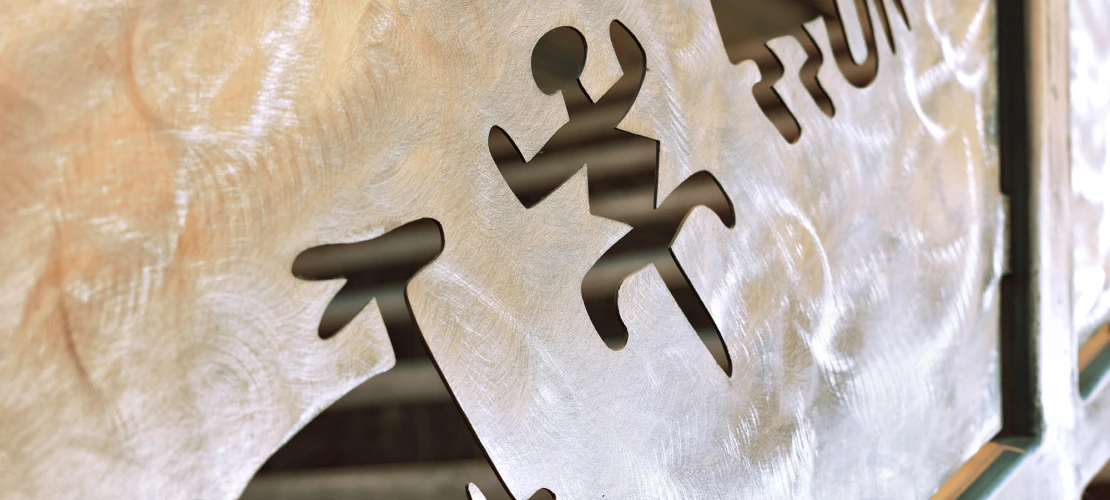Emergence: The Story of the Land We Walk On

Students walk together on the “Emergence” staircase in the University of Arizona BookStores, which features the symbolism and stories of Native cultures.
/ Chris Richards photo
When the clock on the University of Arizona Mall strikes noon, I look around and see hundreds of people from different backgrounds all traveling on their own paths: students on their way to the library to meet with their study groups, professors preparing lessons and members of the Tucson community walking and enjoying the campus atmosphere. They each have a story that makes up part of our diverse community.
Have you ever thought about the story of the ground our campus was built on? UArizona is on the traditional homelands of the Tohono O’odham tribe. With the help of Native American community members, UArizona educates students and faculty about this history through academics, events and artistic expression.
The “Emergence” staircase in the UArizona BookStores, a piece of public art designed in 2002 by Cherokee/Hopi artist and alumnus Gerald Dawavendewa ’93, celebrates Native American culture and impact and highlights the ways that Native nations have influenced our understanding of tradition, the importance of Earth and nature, and the power of history. The stairs are flanked by 48 metal panels with cutouts depicting the symbolism, designs and stories of Native American people.
At the bottom of the staircase, six stars represent the six directions and the creation of the cosmos. As I take a step up the staircase, I see the prehistoric tribes of the Southwest — the Hohokam, Mimbres, Mogollon and Hisatsinom — along with symbols and images illustrating Indigenous forms of knowledge, such as engineering, agriculture and astronomy, as well as aspects of traditional ceremonies.
The second level shines light on Arizona’s modern nations and tribes, beginning with the Tohono O’odham and Akimel O’odham nations. As I continue up the stairs, Arizona’s other tribes and nations are represented.
Many of the panels are dotted with handprints that were traced from the hands of Native women who are UArizona alumnae, parents, students or employees.
Other symbols include animals — representing the relationship between nature and humans — pictographs, sunflowers, and a feathered shield that represents blessings and prayers to all tribes and nations. The contemporary nations also have their own symbols on the steps, like a Cocopah shell pendant, a Mojave beaded collar, an Akimel O’odham calendar stick and Pascua Yaqui deer antlers.
On the last few panels of the staircase is a phrase written in the Cherokee alphabet: ᎣᏣᎳᏅᎸᎢ, “we are all sisters and brothers.” Two girls’ handprints with an incomplete spiral above them represent both their individual journeys through life and the future of UArizona.
Through art pieces like “Emergence,” I am able to educate myself and acknowledge the people and rich culture that laid the foundation for this community I have grown to love, and this helps me fully appreciate the opportunities UArizona gives me, including a great education, career-starting internships and timeless friendships.



